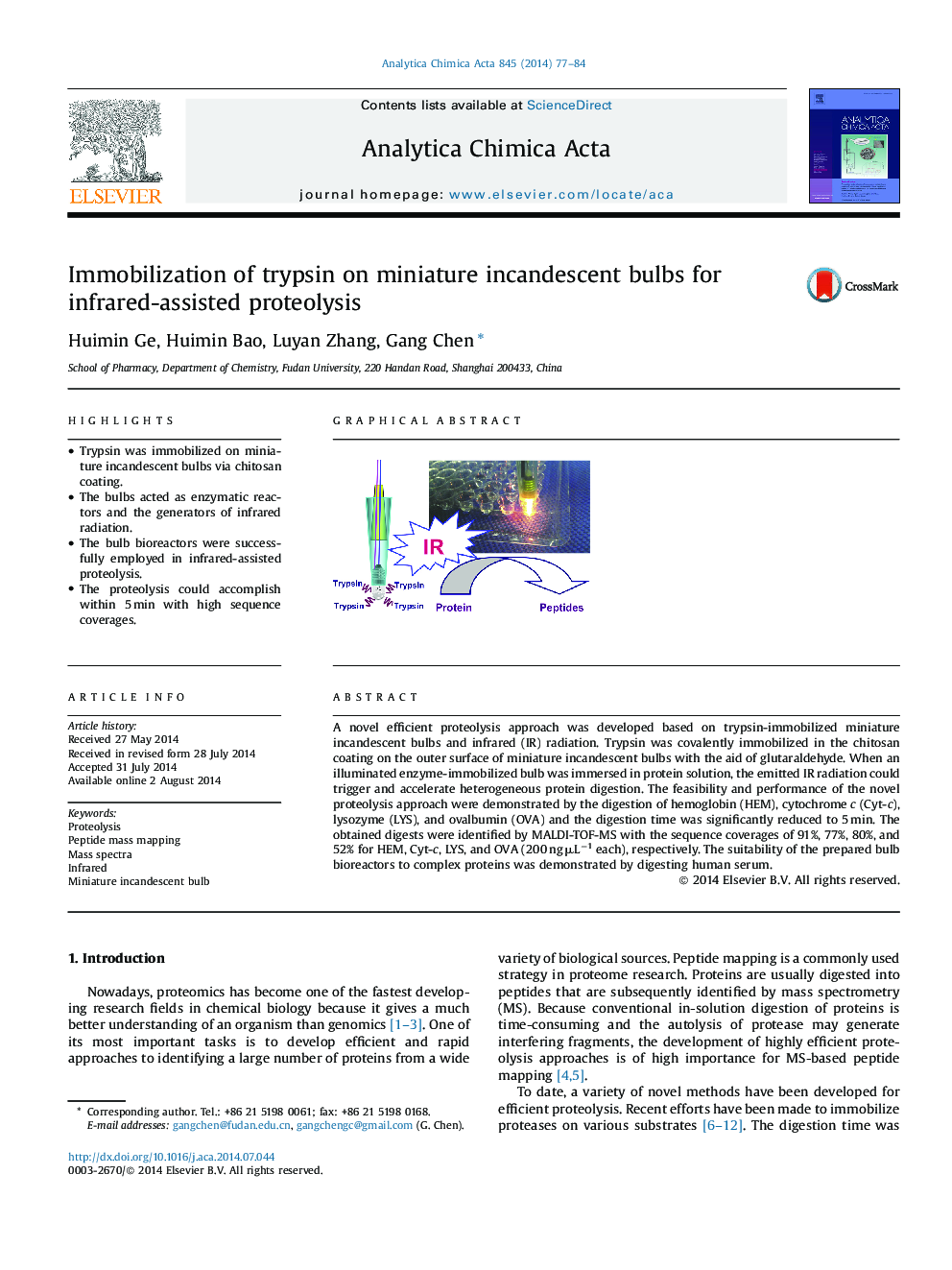| Article ID | Journal | Published Year | Pages | File Type |
|---|---|---|---|---|
| 1164416 | Analytica Chimica Acta | 2014 | 8 Pages |
•Trypsin was immobilized on miniature incandescent bulbs via chitosan coating.•The bulbs acted as enzymatic reactors and the generators of infrared radiation.•The bulb bioreactors were successfully employed in infrared-assisted proteolysis.•The proteolysis could accomplish within 5 min with high sequence coverages.
A novel efficient proteolysis approach was developed based on trypsin-immobilized miniature incandescent bulbs and infrared (IR) radiation. Trypsin was covalently immobilized in the chitosan coating on the outer surface of miniature incandescent bulbs with the aid of glutaraldehyde. When an illuminated enzyme-immobilized bulb was immersed in protein solution, the emitted IR radiation could trigger and accelerate heterogeneous protein digestion. The feasibility and performance of the novel proteolysis approach were demonstrated by the digestion of hemoglobin (HEM), cytochrome c (Cyt-c), lysozyme (LYS), and ovalbumin (OVA) and the digestion time was significantly reduced to 5 min. The obtained digests were identified by MALDI-TOF-MS with the sequence coverages of 91%, 77%, 80%, and 52% for HEM, Cyt-c, LYS, and OVA (200 ng μL−1 each), respectively. The suitability of the prepared bulb bioreactors to complex proteins was demonstrated by digesting human serum.
Graphical abstractFigure optionsDownload full-size imageDownload as PowerPoint slide
